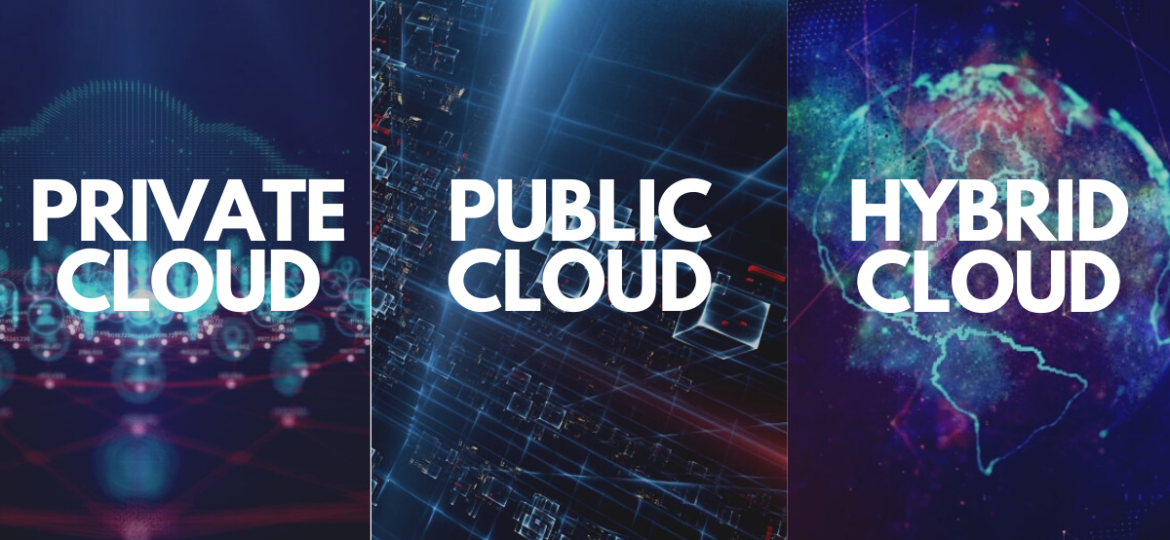
Private Cloud vs Public Cloud vs Hybrid Cloud
Cloud computing, often shortened as “the cloud”, is an umbrella term that describes computer services delivered through the internet.
The cloud uses various resources, architecture models, services, and platforms to provide a wide array of functionality to end-users.
Hosting your servers and services in the cloud has many benefits, such as reliability, excellent performance, scalability, and cost-efficiency.
Cloud computing solutions can take many forms depending on the end-users needs. Still, most deployments can be broadly categorised as either public, private or hybrid cloud.
What is a Private Cloud?
A private cloud refers to computing resources hosted on infrastructure that is only used by a single organisation.
This infrastructure can be physically situated at the company’s on-site data centre, though a private cloud may also be located at an off-site data centre, or provided by a third-party.
Critically, the services and infrastructure are always kept on a private network for the sole use of a single user or organisation. Government agencies, financial institutions, and businesses with critical operations commonly use private clouds.
The Benefits of a Private Cloud
A private cloud has several benefits:
- Your company can customise its cloud environment to meet particular business requirements.
- Although all cloud service providers take security very seriously, having dedicated resources and setting your own security policies adds an additional layer of protection.
- Having a dedicated physical server guarantees resource availability as you have no neighbours to share the server with.
What is the Public Cloud?
Public clouds are now the most common approach to cloud computing.
In a public cloud, resources such as storage, infrastructure, and servers are usually hosted and managed by a third-party cloud service provider.
They can often be scaled up at the push of a button. Unlike a private cloud, all software, hardware, and infrastructure are shared between multiple users and organisations, known as ‘tenants’.
This approach is often referred to as multi-tenancy. Public clouds are commonly used to provide online office software, storage, email services, testing, and development environments.
The Benefits of a Public Cloud
- Compared to a private cloud, public clouds are usually far cheaper. You do not have to buy any software or hardware upfront and often pay for only the exact resources you use.
- You do not have to worry about maintaining the infrastructure yourself.
- A public cloud is often reliable due to virtualisation and load balancing technologies sharing the workload between an extensive network of servers, which prevents failure.
- A public cloud is often very easily scalable, often boasting the capability to instantly provision resources to meet your business and development needs.
What is a Hybrid Cloud?
Hybrid clouds can often be seen as the best of both worlds as they merge the infrastructure of private clouds with public clouds to leverage the benefits of each.
Hybrid cloud deployments are often closely linked to the enterprise cloud or business cloud because it is commonly used by large-scale businesses and enterprises.
A hybrid cloud is often seen as a very flexible option. Allowing organisations to utilise a public cloud to outsource less security-sensitive tasks to a shared environment while keeping sensitive data on a protected on-premises private network.
Cloud bursting is a popular feature of the hybrid cloud, allowing organisations to rapidly respond to a significant spike in demand, such as during peak hours, then scale back to down save on costs.
The Benefits of a Hybrid Cloud
Along with providing the benefits of both private and public cloud, a hybrid cloud has the following advantages:
- The hybrid cloud is highly flexible, allowing users to call upon the additional resources of the public cloud whenever needed.
- Hybrid clouds are very cost-efficient as users only pay the premium for private resources when absolutely necessary.
- Transitioning can be done in phases, making it easy for businesses to implement hybrid cloud solutions at their own pace.
Takeaways
With the rise in popularity of cloud computing, there are many options available to users and organisations; private clouds, business clouds, enterprise clouds, hybrid clouds, and public clouds to name only a few.
The choice and jargon can seem overwhelming at first. Still, there are often no right or wrong answers, just degrees of suitability.
Every solution has its own pros and cons, so you should evaluate and compare them against your business needs to choose the most suitable cloud solution for you.
